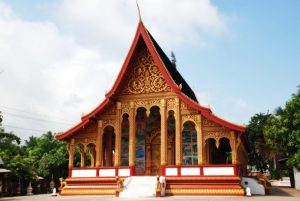Laos’ ancient royal capital, dating back a thousand years, offers a magical trip back in time to a traditional Asia that is fast disappearing. The unforgettable UNESCO World Heritage enclave comprises over 120 sites of cultural and historic importance, squeezed between cobblestone alleys, ornate temples, and picturesque hilltops, and flanked by the confluence of two rivers, the Mekong and the Nam Khan.
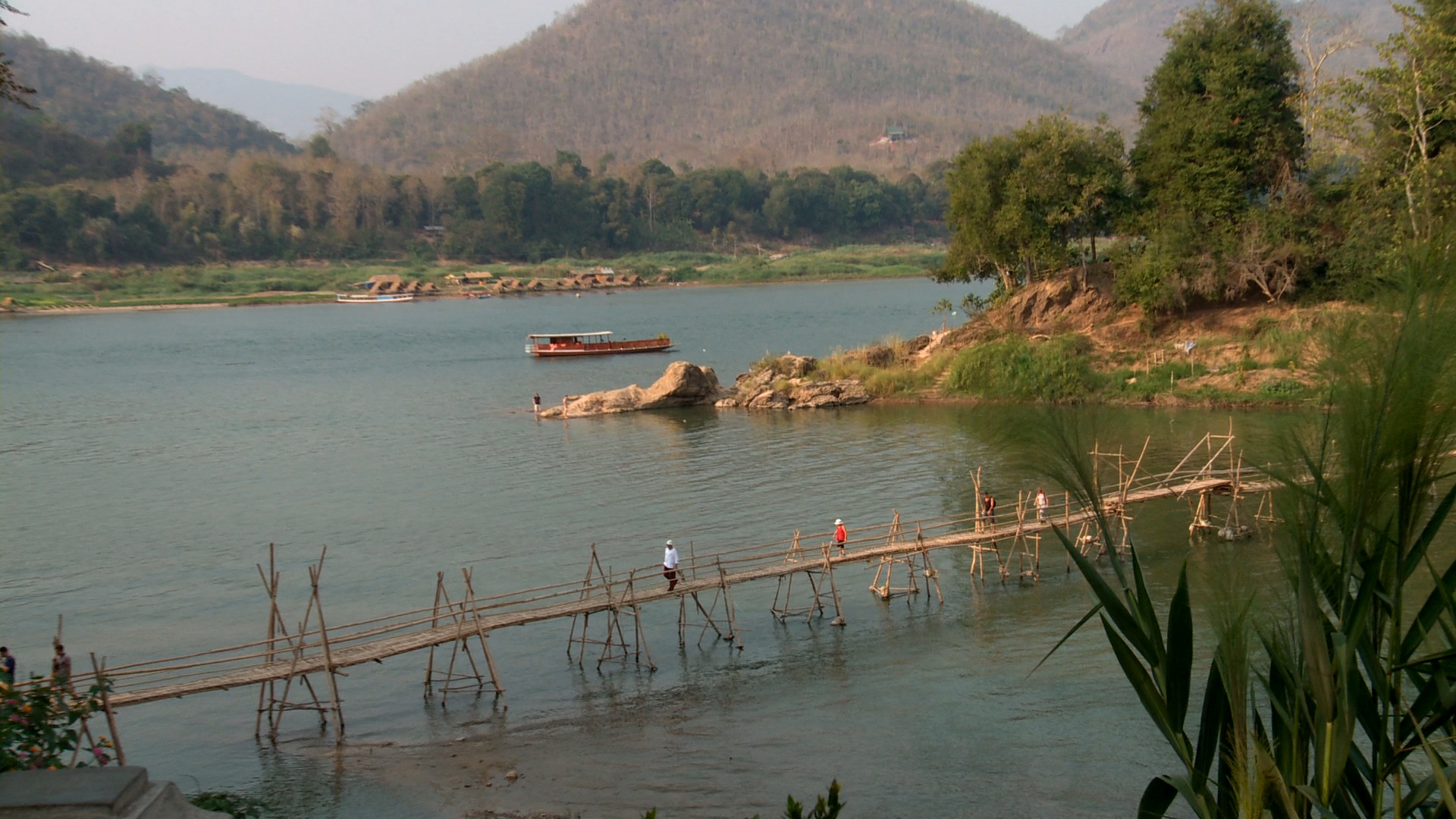
To the right is the Nam Khan river and ahead is the Mekong. This charming confluence of the two rivers flanks the inner core of this ancient city; everything between the two rivers is jointly protected by Unesco and the Lao Ministry of Culture. Photo by Tom Fawthrop.
Luang Prabang was once the capital of the powerful kingdom of Lane Xang (the Kingdom of a Million Elephants), whose wealth and influence were linked to its strategic location on the Silk Route. The city was also the center of Buddhism in the region.
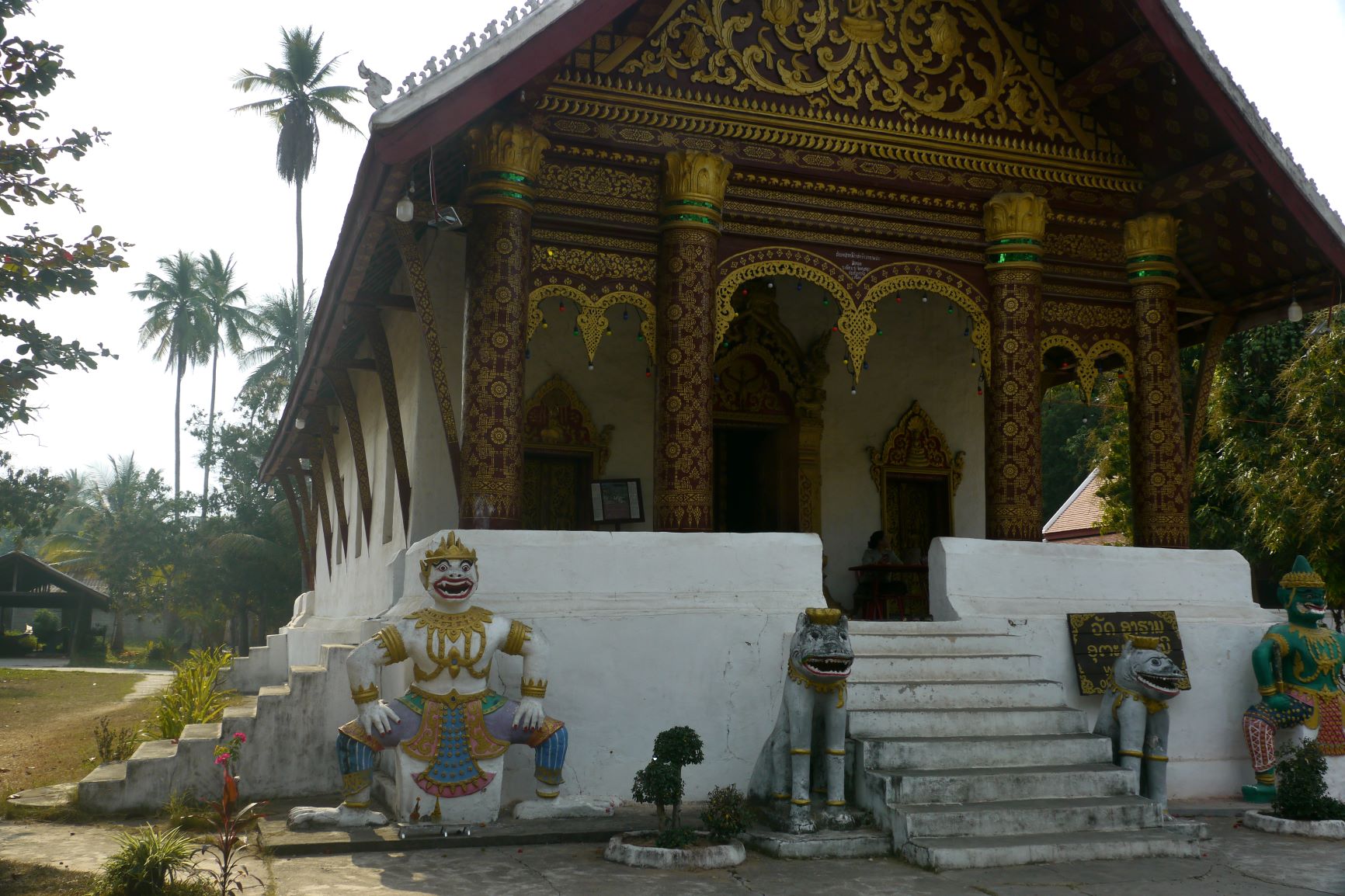
Wat Aham Outama Thany in Luang Prabang, Laos. Photo by Tom Fawthrop.
A local artist and professor, who prefers to remain anonymous, describes the uniqueness of Luang Prabang as the “crossroads where many cultures meet together.”
“It is too bad,” the professor adds, “that ASEAN only cares about corridors of trade, investment, and economy with little interest in promoting a regional corridor for culture.”
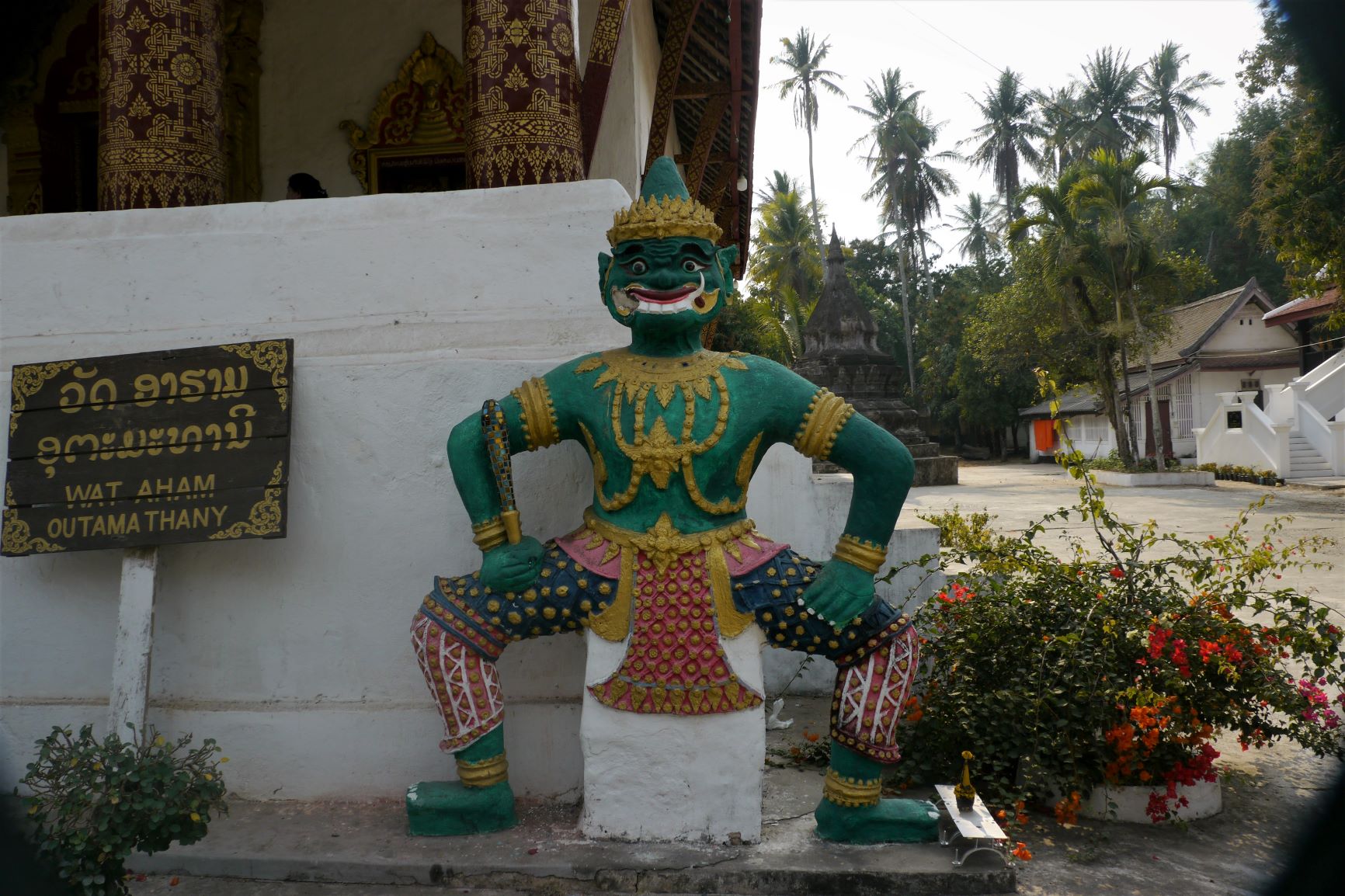
Spirit guardians watch over Wat Aham Outama Thany in Luang Prabang. Photo by Tom Fawthrop.
Thanks to receiving recognition as a UNESCO World Heritage Site in 1995, the cultural treasures of Laos have been well-preserved, winning numerous awards since 2006.
But how much longer can this UNESCO conservation success story be maintained as a cultural oasis while surrounded by the menacing threats of modernity and mega-developments?
The soul of Luang Prabang is under siege. The huge pillars of a new railway bridge under construction, towering over the Mekong, are an everyday reminder of an uncertain future. China’s high-speed rail from Kunming in Yunnan province will be slicing through the beautiful tranquility of Luang Prabang by 2021.
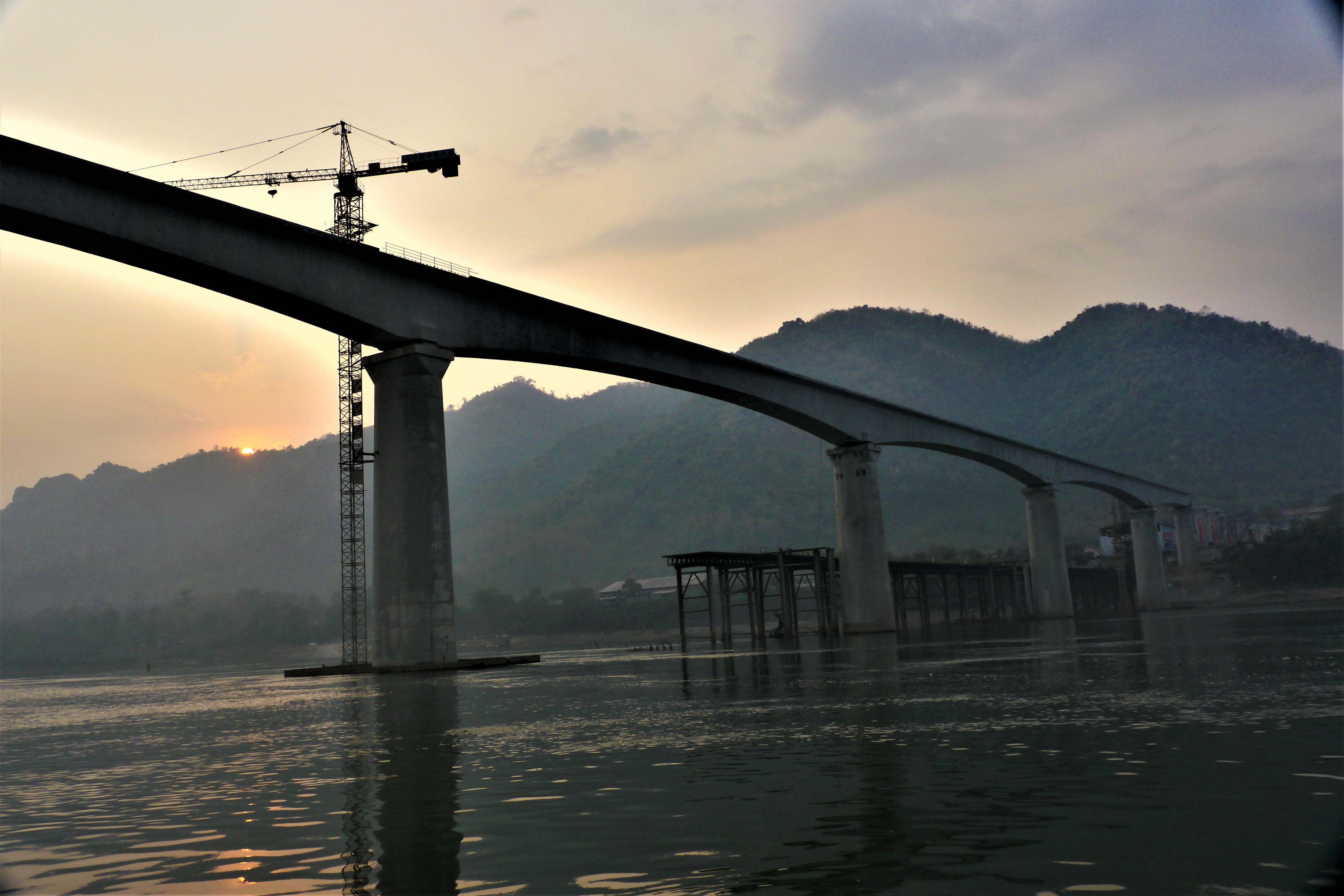
The pillars of China’s high-speed railway tower over the Mekong. Photo by Tow Fawthrop.
The Laos-China Railway Project is estimated to cost about $6 billion, with its final destination in the Laotian capital Vientiane. The project is 70 percent owned by China, 30 percent by Laos. The huge influx of Chinese projects and business all over northern Laos is a cause for concern given the weak environmental regulation of the Lao government.
Dr. Paul Chambers, a specialist in ASEAN and International Relations at Thailand’s Naresuan University, paints a grim picture of what may happen in the next 10 to 15 years to this showpiece of Lao culture.
“The rapid transformation of this World Heritage city will likely result in this cultural mecca being replaced by a Chinese commercial hub with the superimposition of Chinese cultural art and architecture across northern Laos,” he said. “Luang Prabang, with a Lao population of only 62,000, could readily end up as a new Chinese-town.”
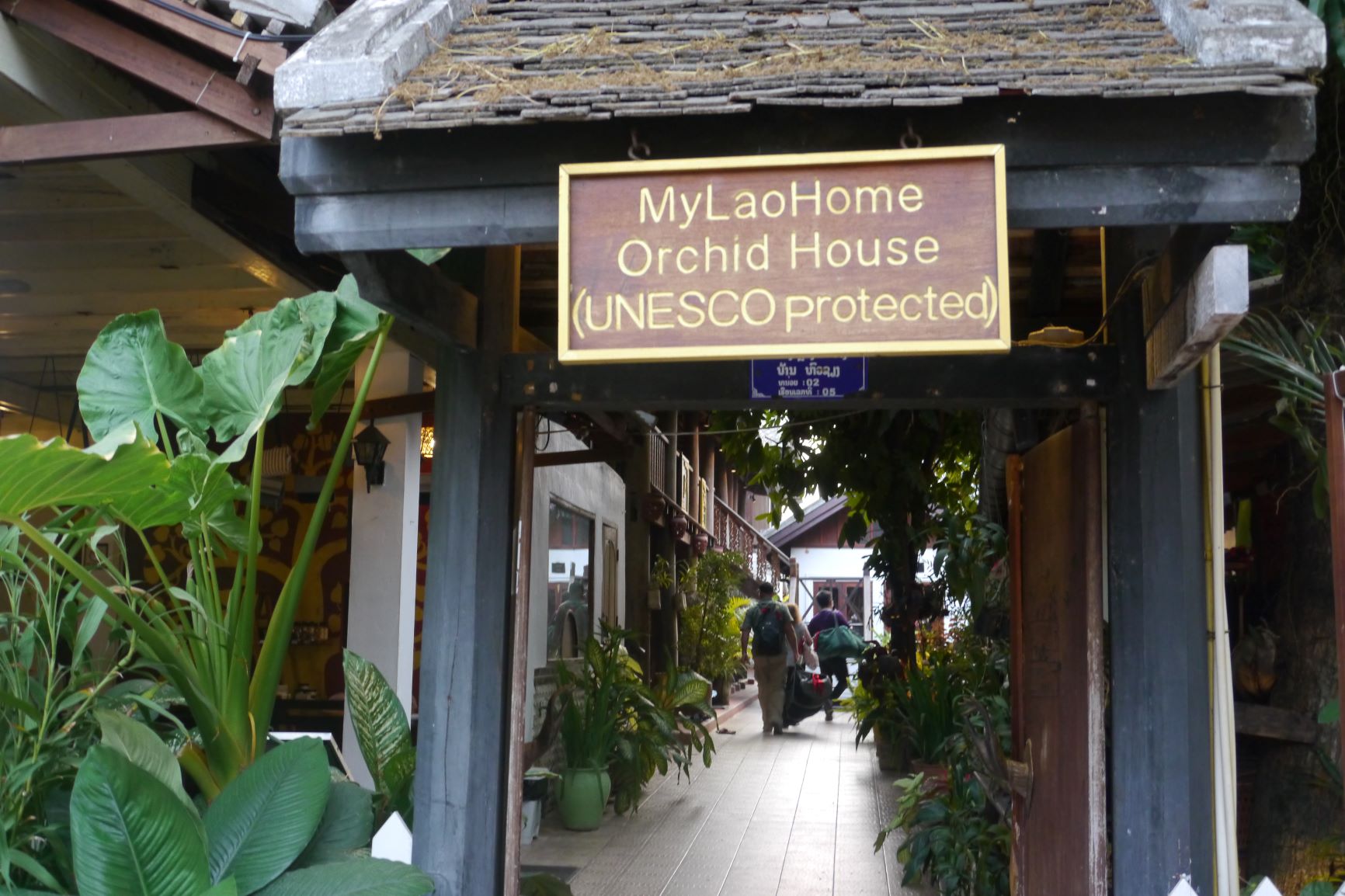
UNESCO in 1995 declared the well-preserved old citadel a World Heritage Site, a comprehensive agreement to protect a living historical site with more than 60,000 citizens. Photo by Tom Fawthrop.
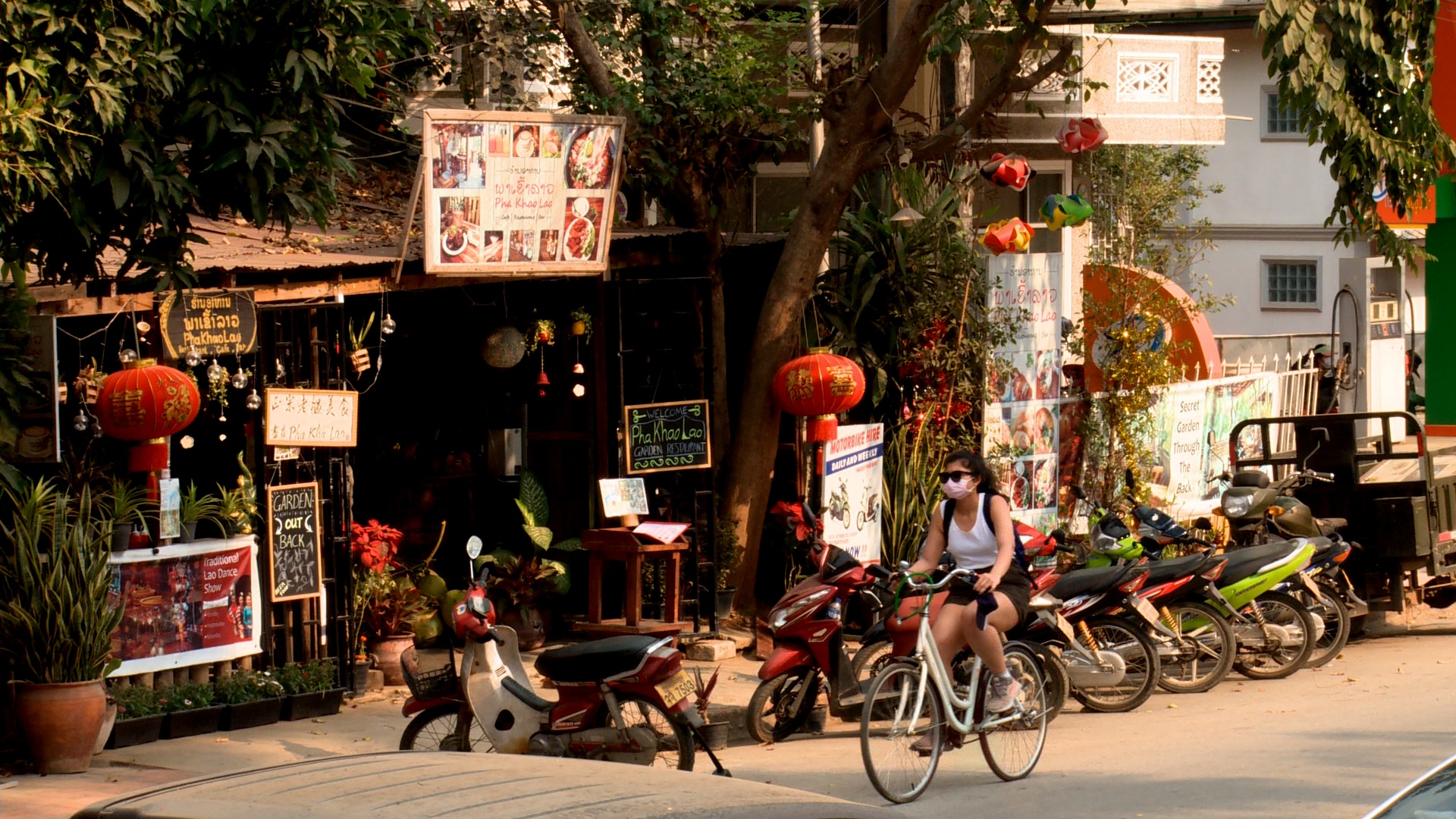
This attractive restaurant in the World Heritage zone abides by UNESCO rules — no commercial advertising of drinks and other products. Photo by Tom Fawthrop.
An even greater danger to the survival of this cultural oasis comes from a massive hydropower project. The Luang Prabang dam is located perilously close, just 25 kilometers upstream on the Mekong from this world heritage city.
Pöyry Energy Asia, the international consultant to the new dam project, denies this dam will do any harm to historic Luang Prabang.
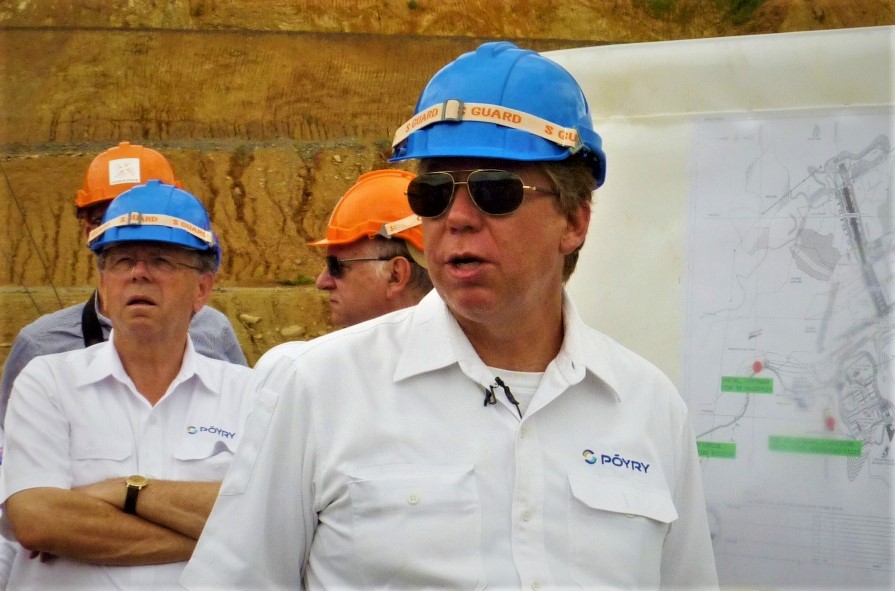
Knut Sierotski, vice president of Pöyry Energy Asia, at Xayaburi Dam site. Photo by Tom Fawthrop.
But Marc Goichot, WWF’s Mekong specialist, says science refutes such glib assurances. According to Goichot, “The Luang Prabang dam would have many impacts, notably drowning an amazingly beautiful riverscape and mosaic of ecosystems.”
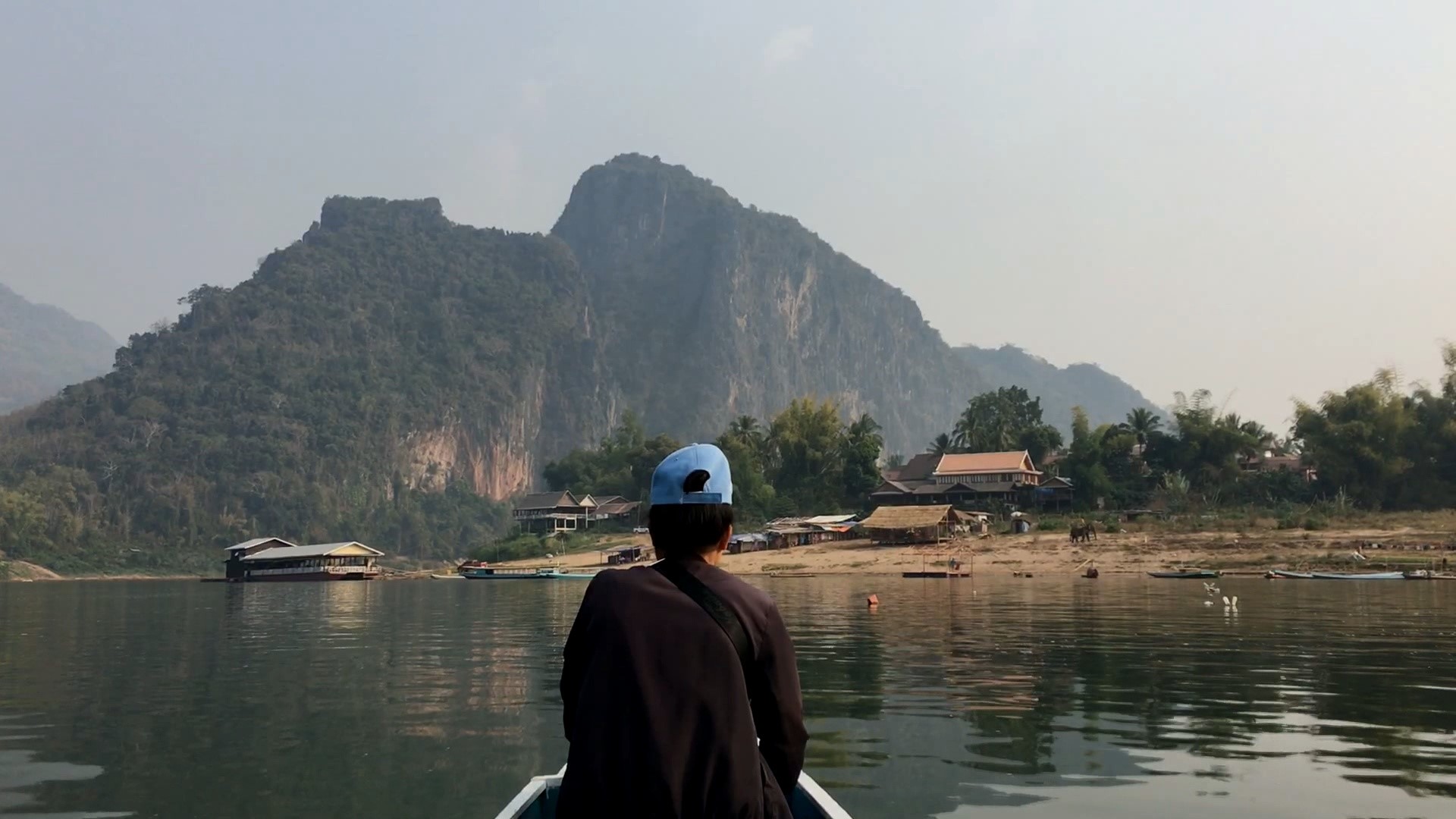
Approaching the dam site. Photo by Tom Fawthrop.
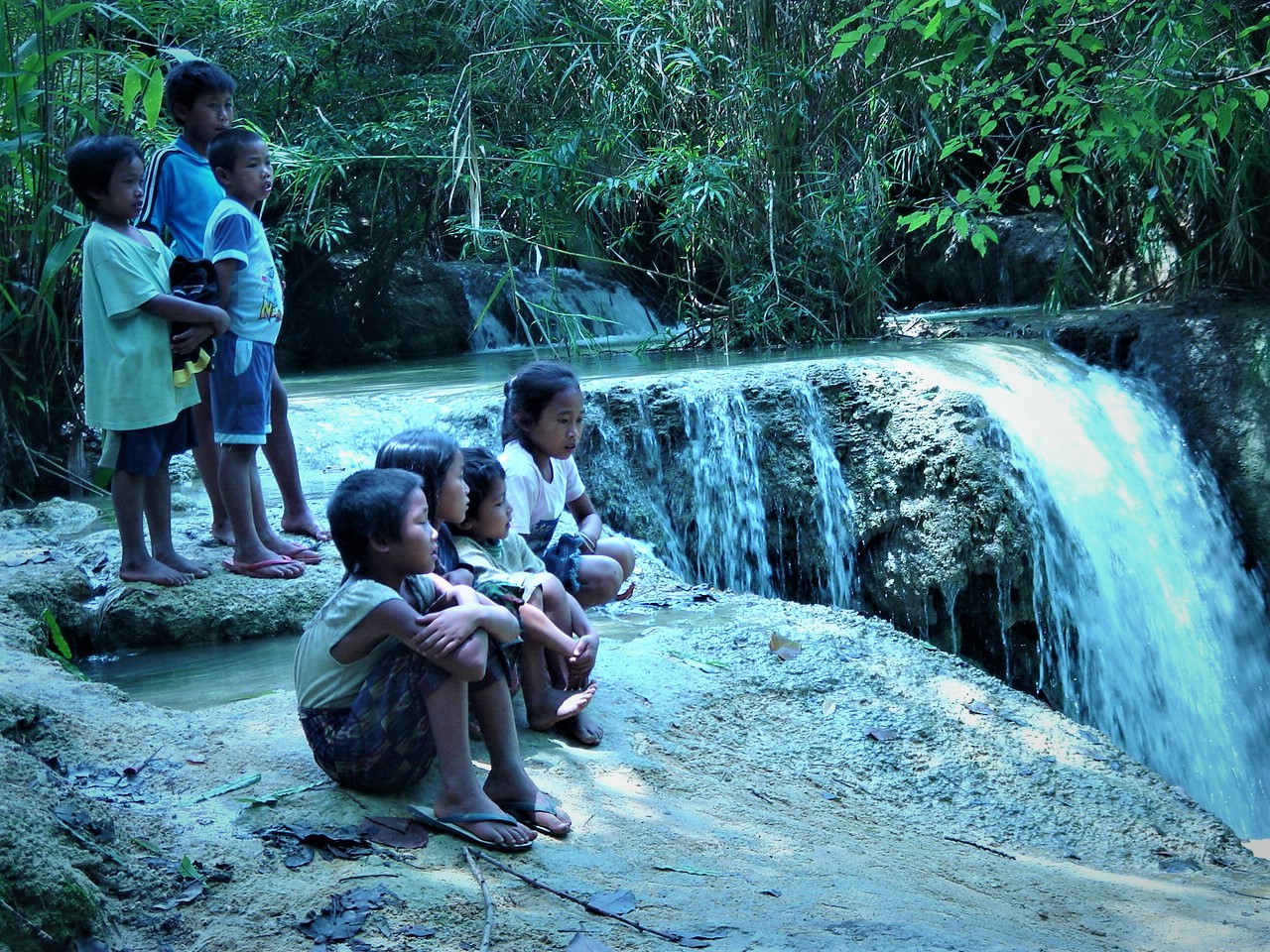
Kuang Si Waterfall on the Mekong near Luang Prabang. Photo by Tom Fawthrop.
“It will cause the relocation of communities whose culture are so intimately linked to the ecology of the river. The fluctuating changing water flow will disfigure this priceless World Heritage site.”
Worse, Luang Prabang is also located in a seismic-sensitive region. An earthquake in Xayaburi province recorded 6.1 on the moment magnitude scale in 2019.
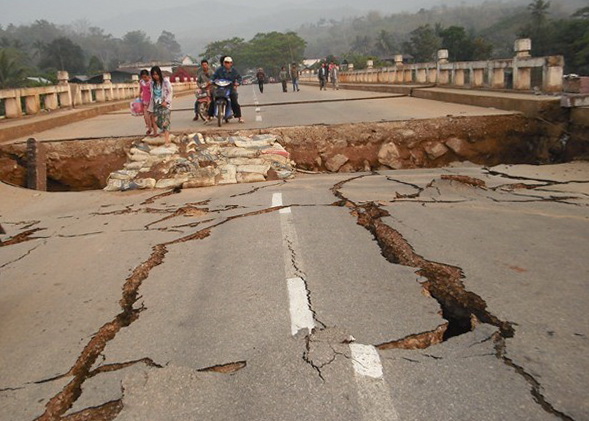
A recent earthquake caused damage in Myanmar, close to the Lao border. Photo courtesy of Democratic Voice of Burma TV.
A leading Thai seismologist recently visited an active fault only 8.6 kilometers from the dam site. “It would be dangerous to rush forward with dam construction without first waiting for an independent seismological report,” the scientist reports. If there is any kind of dam break or accident, then the old city of Luang Prabang would be inundated by flood waters.
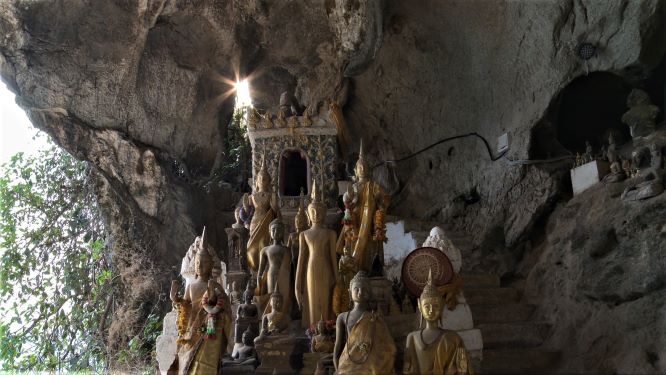
A Buddhist Shrine in the famous Pak Ou Caves, only 4 kilometers from the dam site. Photo by Tom Fawthrop.
Why on earth place a dam here?
According to hydropower consultant Dr. Jian-Hua Meng, “Many favorable and less ecologically sensitive sites could have been developed faster, and with significantly less risk to food security of the downstream countries and to the entire river morphology including the integrity of the delta in Vietnam.”
The dam, he says, is “an irresponsible gamble.”
A Luang Prabang tourist guide comments that “nearly everybody inside the tourist sector is against this dam. It is very bad for our business. It will spoil the nature of ecotourism.” Both small tourists and cruise ships alike, the guide says, “will find it will be more difficult to pass through this new dam.”
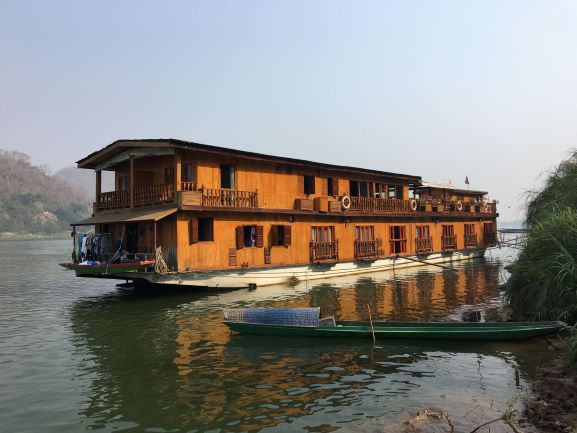
Luxury Mekong cruise boats, styled after the wooden ships of a former era, also conform to local traditions. Most people in the tourism sector are afraid that hydropower will ruin their business. Photo by Tom Fawthrop.
Civil society in the region is calling on UNESCO’s World Heritage Center in Paris to take action to protect Luang Prabang and save the riverscape and natural heritage. Cambodian and Thai groups are about to sign a petition calling on Mechtild Rossler, the director of the UNESCO World Heritage Center, to set up “an urgent Environmental Impact Assessment (EIA) and Heritage Impact Assessment (HIA) of the World Heritage City of Luang Prabang in accordance with the guidelines of the World Heritage Committee.”

Niwat Roykaew, leader of Chiang Khong Mekong Conservation, is coordinating Thai NGOs’ call to protect Luang Prabang’s heritage and riverscape. Photo by Tom Fawthrop.
The World Heritage agreement between UNESCO and the Lao government stipulates not only safeguarding cultural antiquities but also protecting the riverscape and urban wetlands as part of the Outstanding Universal Value) of Luang Prabang site.
The World Heritage website proclaims that “World Heritage sites belong to all the peoples of the world, irrespective of the territory on which they are located.” Keeping UNESCO’s world heritage status depends on the host country adhering to management guidelines and rules that protect all conservation sites in accordance with the 1972 World Heritage Convention.
The Luang Prabang dam project appears to be seriously endangered by current attempts by the Lao government and Thai investors to promote a new dam near the priceless heritage of the ancient kingdom. The big question is what will UNESCO do about it?
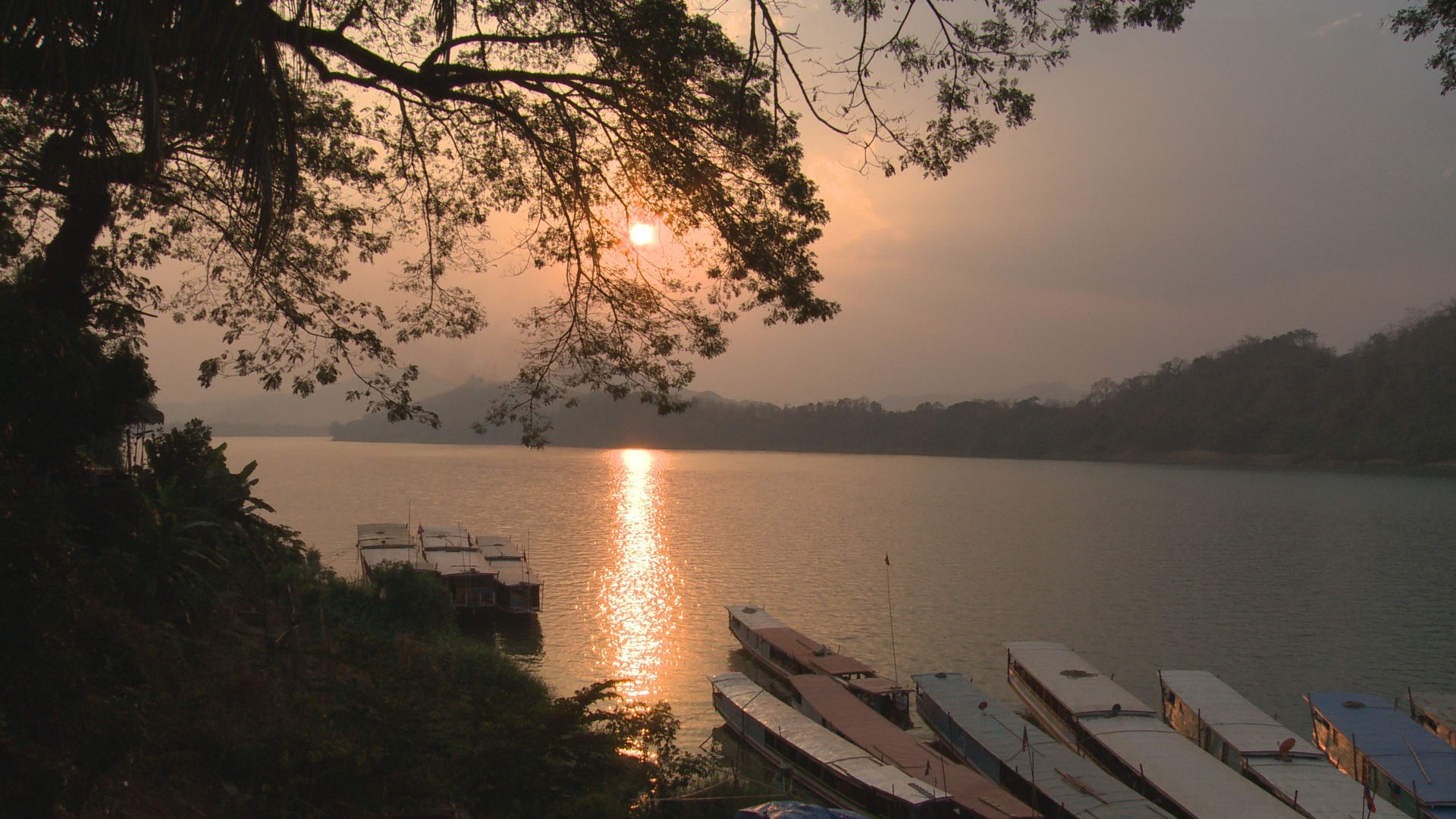
Sunset on the Mekong. Photo by Tom Fawthrop.
Tom Fawthrop is a journalist and film-maker who is working on a new documentary about the Mekong called “A River Screams for Mercy.”













